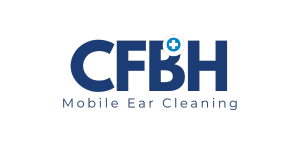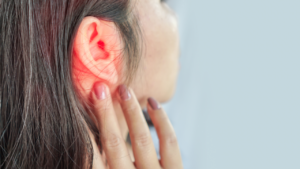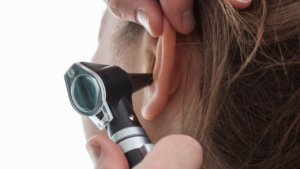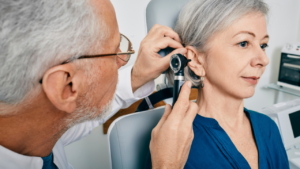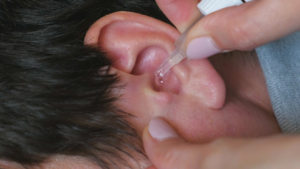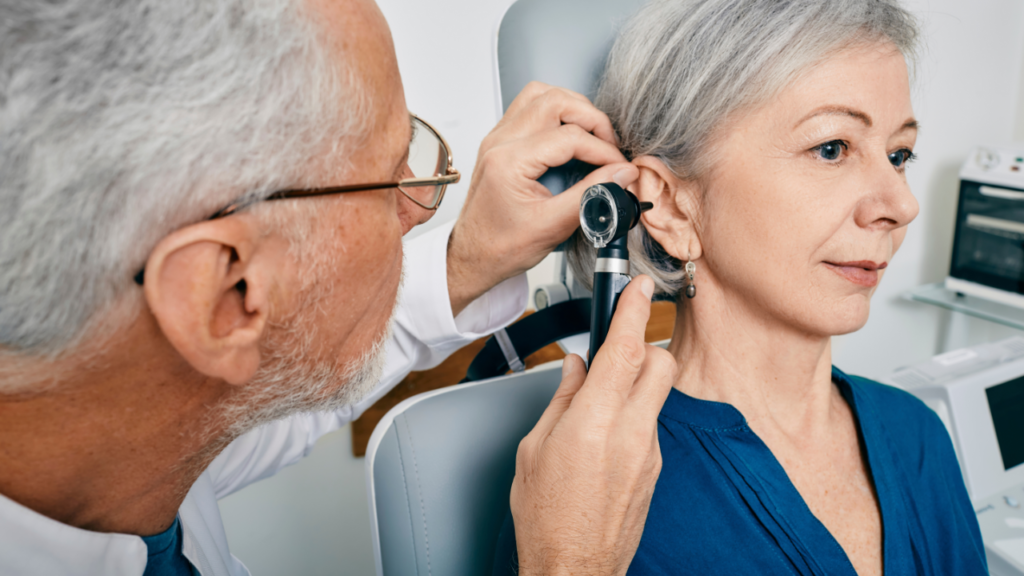
Do you ever wonder why we need to clean our ears and how often we should do it? Ear hygiene is crucial for our overall health, but many of us are unsure about the proper care practices. In this article, we will explore the factors that affect the frequency of ear cleaning, the signs that indicate our ears need attention, and the risks of neglecting this vital task. We will also discuss safe methods for at-home ear cleaning and when it’s necessary to seek professional help. We will delve into the benefits and potential risks of professional ear cleaning, as well as how to maintain ear hygiene between appointments. Stay tuned to learn more about how to keep your ears healthy and clean.
Key Takeaways:
- Cleaning ears is essential for proper ear health and function.
- The frequency of ear cleaning depends on factors such as earwax production and personal hygiene habits.
- Signs of earwax buildup and the risks of not cleaning ears should be monitored for proper ear hygiene and potential professional cleaning.
Why Do We Need to Clean Our Ears?
Proper ear cleaning is essential for maintaining good aural hygiene and preventing issues associated with the accumulation of earwax, also known as cerumen, in the ear canal.
The structure of the ear comprises the outer, middle, and inner ear. Cerumen, produced by specialised glands in the ear canal, serves as a protective agent, trapping dust and debris to prevent infections.
Regular cleaning with safe methods like gentle irrigation or using a washcloth can help in the removal of excess earwax. Failure to clean the ears properly can lead to blockages, affecting hearing and potentially causing discomfort.
Seeking advice from a healthcare professional for stubborn blockages or if experiencing pain or hearing loss is crucial for maintaining optimal ear health.
How Often Should We Clean Our Ears?
Determining the frequency of ear cleaning depends on individual factors such as earwax production, susceptibility to cerumen impaction, and advice from healthcare professionals like doctors.
Incorporating routine ear cleaning can be a beneficial step in maintaining ear health. Keeping the ears clean can help prevent issues such as excess wax buildup, which can lead to discomfort, hearing loss, or even infections.
It’s essential to pay attention to indicators of cerumen impaction, such as ear pain, hearing difficulties, or ringing in the ears, prompting the need for cleaning. It’s crucial to strike a balance and avoid over-cleaning that can disrupt the natural protective barrier of the ear canal.
What Factors Affect the Frequency of Ear Cleaning?
Several factors influence how frequently ear cleaning should be performed, including the individual’s earwax production, any symptoms of cerumen impaction, and the presence of underlying ear conditions.
Earwax consistency plays a significant role in determining when ear cleaning is necessary. If an individual has dry earwax, it may naturally flake away, requiring less frequent cleaning. On the other hand, those with sticky or wet earwax may need more regular cleaning to prevent blockages.
Symptoms like hearing loss or discomfort, itching, ringing in the ears, or a feeling of fullness can indicate the need for ear cleaning. If these symptoms persist, it is advisable to seek professional assistance to avoid complications.
The risk of cerumen impaction, where earwax builds up and obstructs the ear canal, increases the need for regular cleaning. Factors like using hearing aids, earplugs, or frequent headphone use can also contribute to cerumen impaction, necessitating more frequent cleaning to prevent blockages and discomfort.
What Are the Signs That Our Ears Need Cleaning?
Recognising the signs that indicate the need for ear cleaning is crucial for maintaining optimal ear health and preventing issues like hearing loss associated with cerumen buildup.
Common symptoms that suggest the presence of excess earwax or cerumen impaction include:
- hearing difficulties
- earache
- tinnitus
While mild symptoms can often be alleviated at home using wax softeners or drops, it’s essential to seek professional intervention if you experience severe or persistent symptoms such as sudden hearing loss, dizziness, or bleeding from the ear.
What Are the Symptoms of Earwax Buildup?
The symptoms of earwax build-up or cerumen impaction can vary and may include earache, tinnitus, dizziness, a feeling of fullness in the ear, and in some cases, signs of infection.
One of the most common complaints related to excess earwax is earache, which can range from mild discomfort to sharp pain. Changes in hearing, such as decreased ability to hear or a sense of muffled sound, are also frequently experienced. Dizziness and equilibrium issues may arise due to the disruption in the ear’s natural balance caused by the build-up. Individuals may feel a persistent fullness or pressure inside the ear, indicating the need for earwax removal.
What Are the Risks of Not Cleaning Our Ears?
Neglecting ear cleaning can lead to various risks, including cerumen impaction, hearing loss, increased susceptibility to infections, and dispelling common misconceptions about the use of ear candles or cotton buds.
Cerumen, commonly known as earwax, plays a crucial role in protecting the ear canal from dust, bacteria, and foreign particles. When not cleaned properly, it can accumulate and harden, leading to blockages that can result in pain, dizziness, and difficulty hearing. Regular ear hygiene practices such as gentle cleaning with a flannel and avoiding inserting objects into the ear can significantly reduce the risk of cerumen impaction.
How Can We Clean Our Ears Safely at Home?
Safely cleaning the ears at home can be achieved through gentle methods like using ear cleaners, warm water, or a flannel while avoiding abrasive tools like cotton buds that can push earwax deeper into the ear canal.
When preparing a DIY ear cleaning solution, remember that a mixture of equal parts vinegar and surgical spirit can help soften earwax for easier removal and maintain ear hygiene. Consistency is key in the application of ear cleaners, as irregular cleaning can lead to wax buildup. Remember to tilt your head to the side when applying the solution and allow it to sit for a few moments before gently flushing out with warm water.
It’s crucial to never insert anything into the ear canal, including cotton buds, hairpins, or ear candles, as these can cause injury, damage the ear canal, or worsen existing ear problems. Instead, opt for soft, dampened cloths for external ear cleaning, focusing on the outer areas to prevent wax blockages and infections.
What Are the Dos and Don’ts of Ear Cleaning?
Understanding the dos and don’ts of ear cleaning is crucial to maintaining ear health, ensuring proper removal of earwax without risking damage to the ear canal, and seeking professional advice if needed.
- Do: Use gentle techniques like using a warm flannel to clean the outer ear, or ear drops to soften earwax for easier removal.
- Do: Seek guidance from a healthcare provider if experiencing pain, hearing loss, or persistent ear discomfort.
- Don’t: Insert cotton buds deeply into the ear canal, as this can push wax further in and potentially cause injury.
When Should We Seek Professional Help for Ear Cleaning?
Consulting a professional for ear cleaning is advisable when experiencing persistent symptoms like hearing loss, pain, or discharge, or if attempts at home cleaning have not alleviated concerns.
While it’s common and usually safe to attempt home remedies for ear cleaning, certain situations call for professional intervention. For instance, if you notice any blood coming from the ear during cleaning, severe pain that does not subside, or if there is a sudden decrease in hearing, seeking medical advice promptly is crucial. If you have a history of ear infections, a perforated eardrum, or are using hearing aids, it’s best to consult a healthcare provider for ear cleaning to avoid potential complications.
What Are the Methods Used by Professionals for Ear Cleaning?
Medical professionals employ various methods for ear cleaning, including irrigation, suction, or manual removal using specialised tools to address issues like cerumen impaction or potential infections.
One common technique used by healthcare providers is ear lavage, which involves flushing the ear with a gentle stream of warm water to dislodge earwax buildup. This method is especially useful for individuals with excessive earwax or hardened blockages.
Another approach is ear aspiration, where a suction device is used to carefully remove earwax and debris. This method is preferred for those with sensitive ear canals or a history of ear infections.
For more stubborn cases, healthcare professionals may opt for microsuction, a precise procedure utilising a tiny suction device to extract earwax with minimal discomfort. This method is highly effective in removing compacted earwax without causing trauma to the ear canal.
How Often Should We Have Our Ears Professionally Cleaned?
The frequency of professional ear cleaning sessions should be determined based on individual needs, such as the presence of chronic ear issues, recurring cerumen impaction, or symptoms of hearing impairment.
Regular monitoring is crucial for those with chronic ear concerns as it helps in early detection of any potential issues or complications. Individuals experiencing hearing difficulties may benefit from more frequent appointments to address any build-up that could exacerbate their condition. Those prone to complications from cerumen accumulation, such as infections or discomfort, should seek regular cleanings to maintain ear health and prevent further problems.
What Are the Factors That Determine the Frequency of Professional Ear Cleaning?
Several factors influence how often individuals should seek professional ear cleaning, including age-related hearing loss like presbycusis, susceptibility to cerumen impaction, or the presence of underlying ear conditions.
For elderly individuals, the natural ageing process can lead to changes in the inner ear, affecting their hearing ability and making them more prone to cerumen buildup. This demographic often requires more frequent ear cleanings to maintain optimal hearing health. Certain medical conditions like diabetes or skin disorders can increase the likelihood of earwax accumulation, necessitating regular cleaning sessions.
What Are the Benefits of Professional Ear Cleaning?
Professional ear cleaning offers advantages such as thorough removal of impacted earwax, expert guidance on ear care, and the identification of underlying ear conditions that may require treatment.
When seeking professional ear cleaning services, you are ensuring that your delicate ears are in the hands of trained medical professionals who possess the necessary skills and knowledge to safely manage your ear health. These specialists can provide personalised advice on how to care for your ears, including tips on preventing future wax buildup and protecting your ears from potential damage.
By opting for professional cleaning, you are taking proactive steps towards comprehensive cleaning that goes beyond what home remedies or over-the-counter solutions can achieve. This meticulous approach helps in reducing the risk of complications such as infections or injuries that may occur due to improper cleaning techniques.
What Are the Potential Risks of Professional Ear Cleaning?
Whilst professional ear cleaning can be beneficial, there are potential risks, such as injury to the ear canal, perforation of the eardrum, or complications if not performed by trained healthcare providers.
These risks highlight the importance of choosing a skilled professional for any ear cleaning procedure. Ear trauma could lead to pain, hearing loss, or dizziness, impacting one’s quality of life. Infections may occur if proper hygiene practices are not adhered to during the process, potentially causing further complications. Failure to comply with regulatory standards could pose legal risks for both the practitioner and the patient. To ensure a safe and effective ear cleaning experience, always verify the qualifications and credentials of the healthcare provider performing the procedure.
How Can We Maintain Ear Hygiene in Between Professional Cleanings?
To uphold ear hygiene between professional cleanings, individuals can utilise gentle methods like regular ear inspections, avoiding ear candling practices, and seeking prompt attention for any emerging symptoms like hearing loss.
Regular ear inspections play a crucial role in identifying early signs of any issues that may arise, such as excessive earwax build-up or inflammation. By examining the ears regularly, individuals can catch potential problems before they escalate.
- Avoiding ear candling practices is essential due to the risks involved, including burns, punctured eardrums, and pushing earwax further into the ear canal. Instead, opt for safer cleaning methods recommended by healthcare professionals.
Seeking prompt attention for emerging symptoms like hearing loss is vital as untreated hearing issues can lead to further complications. Early intervention can prevent potential long-term damage and ensure better hearing health in the future.
